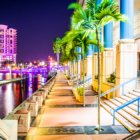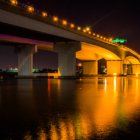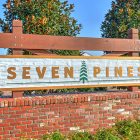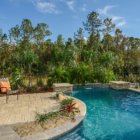Looking to move to a metropolitan area with plenty of green space?
You won’t do better than Jacksonville, Florida, which is the largest city by area in the contiguous United States — more than 840 square miles. Jacksonville also boasts the nation’s largest urban park system.
system.
That’s a lot of room to roam, and we at ICI Homes are proud to contribute our master-planned communities to the Jacksonville area, and to serve as a selected builder in other communities.
Whatever your impetus for moving here, take advantage of this energetic port city and its gifts from Mother Nature. You’ll find miles of Atlantic Coast beaches, hiking and biking trails, a surfing community, boating, kayaking and several parks.
Jacksonville’s urban park wealth encompasses more than 10,000 acres, 10 combined state and national parks, a national preserve and numerous gardens, city parks and recreational facilities.
Are you ready to get started? Here’s our guide to three can’t-miss, Jacksonville-area parks.
The Treaty Oak at Jessie Ball duPont Park
There are literally hundreds of urban parks in Jacksonville, with nearly as many activities. This small slice of simple, historical green on the city’s Southbank side (as on the south bank of the St. John’s River, which intersects downtown Jacksonville), should make your list.
In the early 20th century, it held an amusement park. Its only resident now is the giant live oak tree — the Treaty Oak — that dominates today’s tiny park. The Treaty Oak is more than 250 years old. It was saved from destruction during the 1930s, when Florida Times-Union reporter Pat Moran wrote about a fake treaty supposedly signed by settlers and native Indians under its branches, to call attention to the tree’s plight. Mrs. duPont and her family foundation bought the initial plot with the tree in 1934 and donated it to the city in 1964. The city later added acreage.
Today the Treaty Oak is surrounded by skyscrapers, but its majestic branches and the meandering boardwalk path under them, preserve an important piece of landscape.
Timucuan Ecological and Historic Preserve
This is a 6,000-acre U.S. National Park — and a doozy in every positive sense of the word. You can’t experience Timucuan Preserve in one or two trips. There’s too much history, beauty and recreational opportunities, but we’re happy to offer some thumbnail tips.
It contains rare, unspoiled Atlantic Coast wetlands. Expect beaches, marshes, hardwood hammocks (elevated tree clumps surrounded by wetlands) and wildlife.
Explore the historical early 19th-century Kingsley Plantation, with its main house, slave quarters, several outbuildings and interpretive gardens.
Visit the Fort Caroline National Memorial, a reconstruction of a lost, mid-1500s French fort that was part of an ill-fated French settlement in the Jacksonville area.
Get active with this park’s numerous nature trails, kayak launches and opportunities to explore pristine wilderness.
Kathryn Abbey Hanna Park
Hanna Park is a sprawling beachside favorite for surfing, hiking, mountain biking and camping. It’s particularly attractive to surfers, who flock to the area known as “The Poles.” Inland, a freshwater lake offers an alternative. Or, jump on the more than 20 miles of trails. Kids can enjoy a playground and zipline.
Hanna Park is one of “JAX’s” northernmost city parks, tucked near the historic Mayport fishing village, near the mouth of the St. Johns River.
Ready to live your Jacksonville lifestyle? Talk to ICI Homes here.








